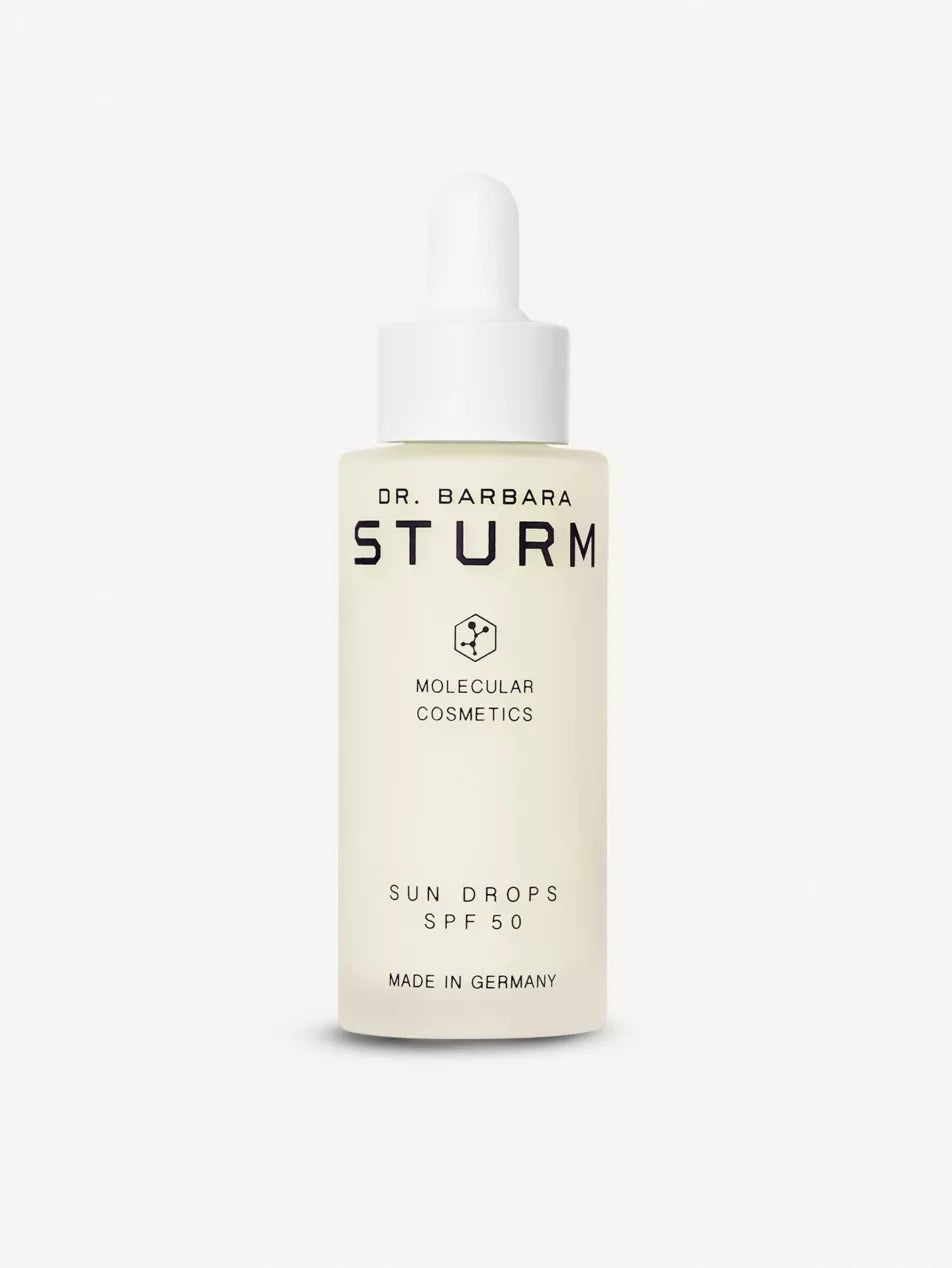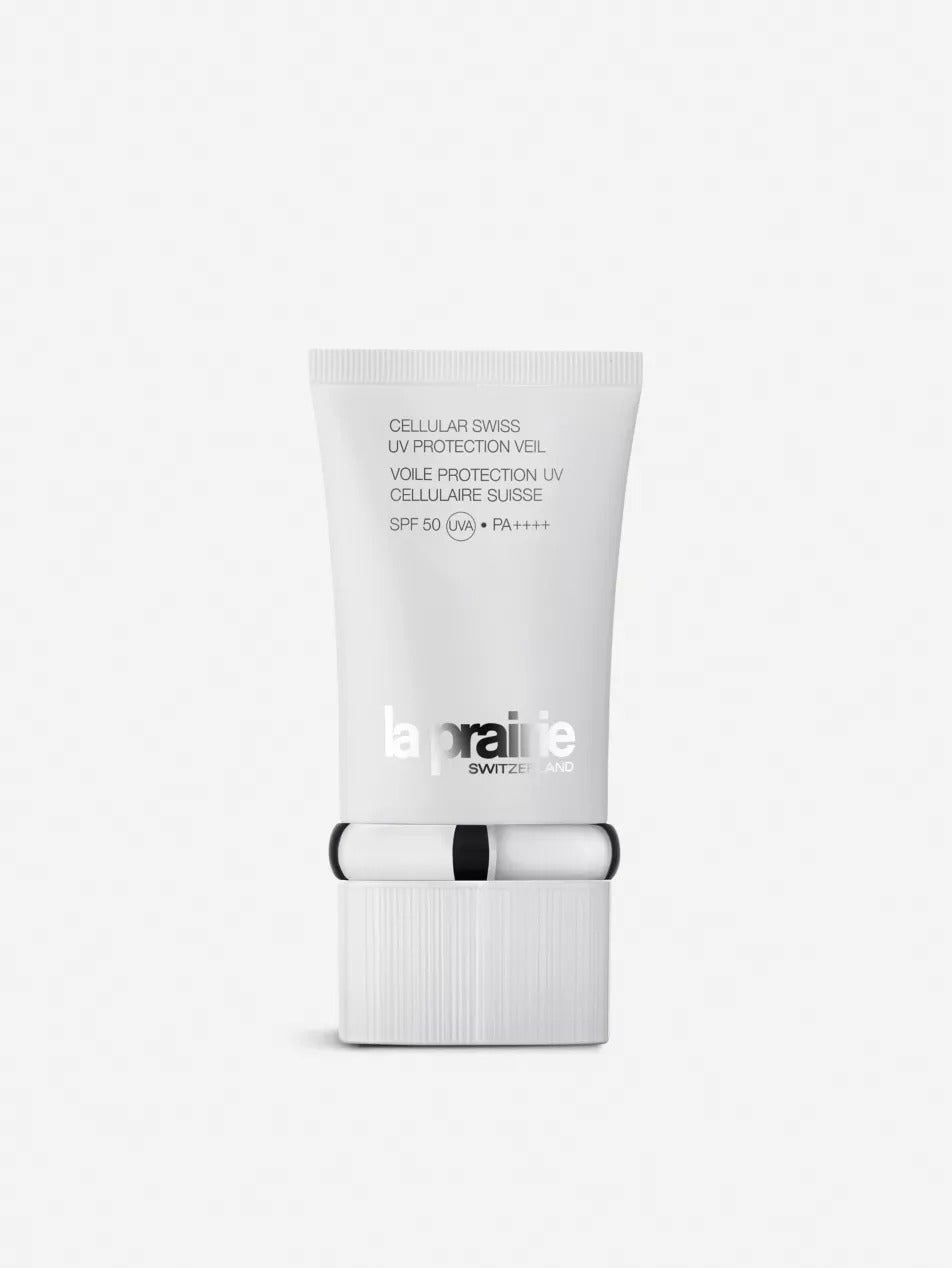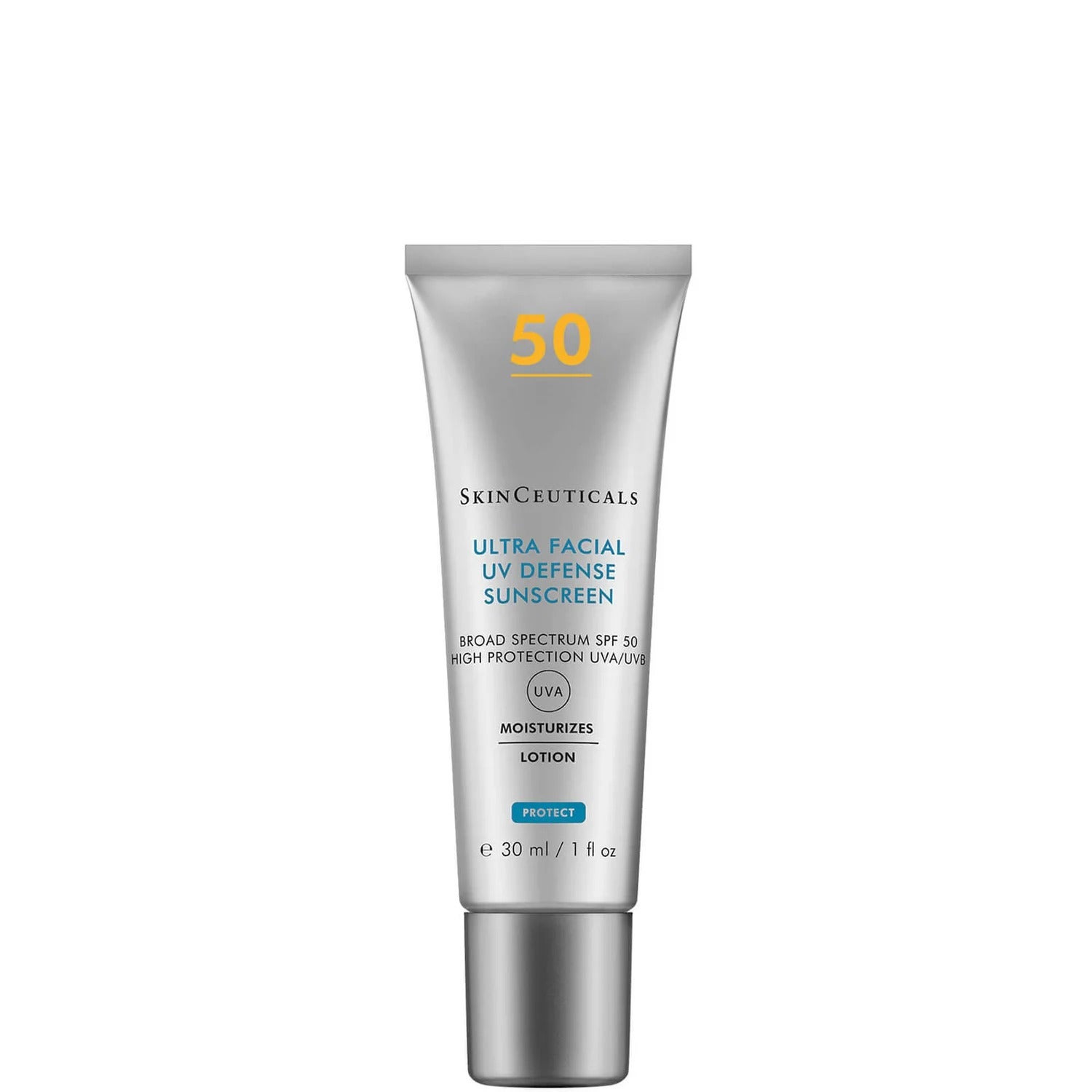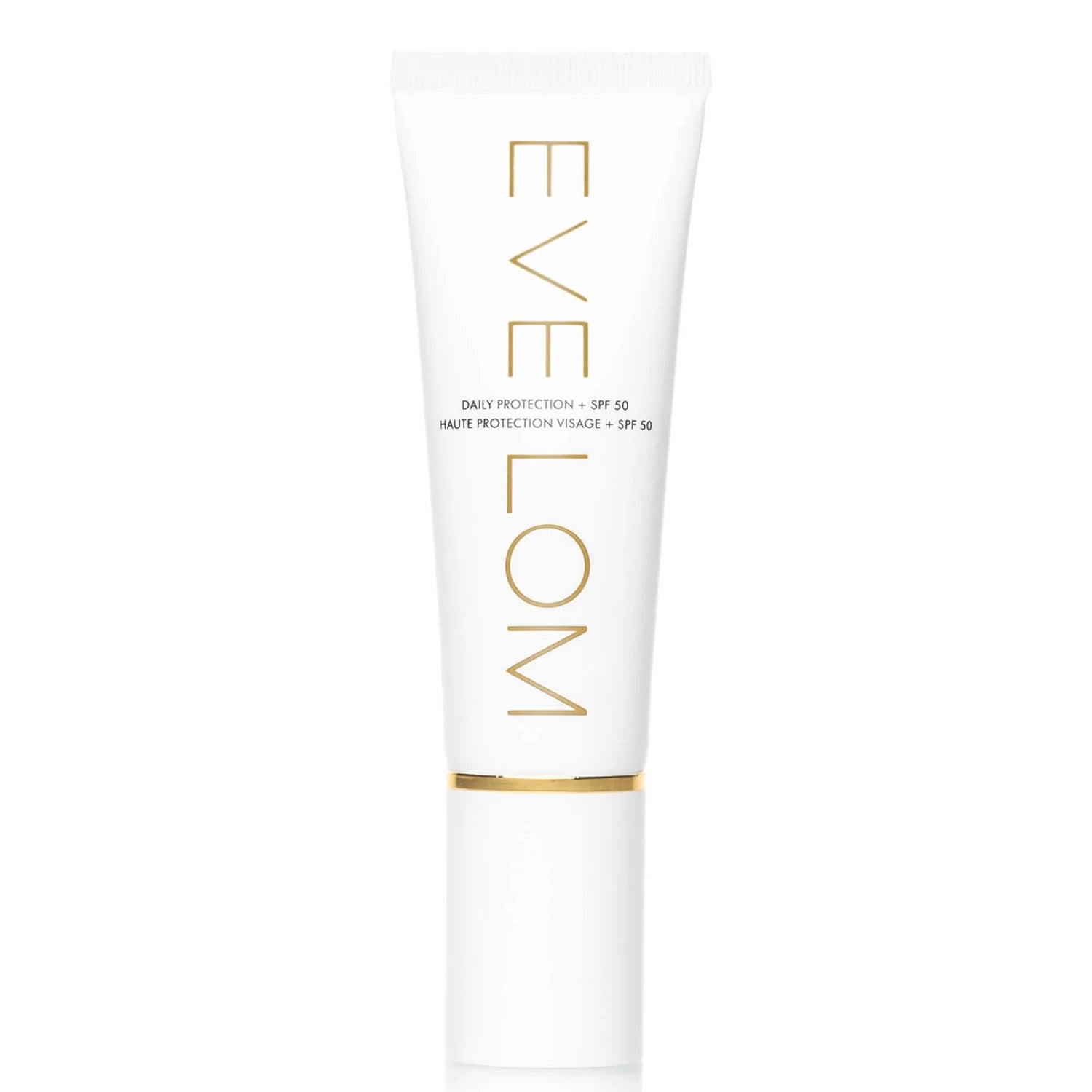A Dermatologist Set Me Straight On The “Correct” Amount To Spend On SPF
All linked products are independently selected by our editors. If you purchase any of these products, we may earn a commission.
Photographed by Myesha Evon Gardner.
Welcome to Sun Blocked, Refinery29’s global call to action to wake up to the serious dangers of tanning. No lectures or shaming, we promise. Instead, our goal is to arm you with the facts you need to protect your skin to the best of your ability, because there’s no such thing as safe sun.
The sunscreen I’m currently using — Bondi Sands’ Sunscreen Lotion SPF 50+ — is a humble £7.99, and I love it. It’s lightweight yet substantially moisturising, sits perfectly under makeup and doesn’t aggravate my acne-prone skin. With that price tag, you’d be forgiven for thinking it’s too good to be true, but when an aesthetician and a cosmetic chemist also recommended it recently, I knew I was onto a winner. Others are willing to pay considerably more for sunscreen, though.
AdvertisementADVERTISEMENT
One of my beauty editor peers is currently trialling an SPF worth £110. “It’s just so good,” she sighed, acknowledging that it’s markedly more expensive in comparison to most others on the market. Considering sunscreen is a must all year round, it got me thinking: Is there a “right” amount of money to spend on sunscreen? And what exactly is the difference between luxury and high street SPFs?
What are the main differences between cheap and luxury sunscreens and SPFs?
The answer isn’t cut and dry. An effective sunscreen should always contain UVA and UVB filters, says Nausheen Qureshi, a skincare biochemist and cosmetic scientist — this is referred to as a “broad spectrum” sunscreen. However, it’s a common misconception that expensive sunscreens are “better” at protecting skin from UV light, says consultant dermatologist and surgeon, Dr Magnus Lynch.
One key reason why a sunscreen might be more expensive than another could be due its additional ingredients. Dr Lynch says that some more expensive sunscreens often contain antioxidants (think vitamin C, ferulic acid, vitamin E and niacinamide) or peptides (skin-strengthening proteins). Interestingly, research shows that antioxidants, which protect the skin against environmental aggressors like pollution, can boost the protective efficacy of sunscreen. Dr Lynch adds that more expensive sun creams may also contain extended spectrum photoprotection such as infra-red (IR) filters, which can be helpful for patients concerned with pigmentation. As well as pigmentation, infra-red radiation emitted from the sun alongside UV has been linked with melasma and age spots.
AdvertisementADVERTISEMENT
Qureshi says that luxury brands may also add texturising ingredients such as silicones (which she rates for creating a barrier on the skin to “lock in” sunscreen) and other complimentary ingredients, which may help to increase sunscreen’s efficiency. “These are usually costly ingredients hence why they are omitted from budget sunscreens,” says Qureshi. Both Dr Lynch and Qureshi note that higher prices can also reflect marketing and packaging expenses. Air tight packaging is usually more expensive than dropper or screw cap bottles, for example, as it preserves the product for longer. For some people, this is all well worth the price, says Qureshi.
Is expensive sunscreen better than cheap sunscreen?
How much you drop on SPF is entirely dependent on budget and personal preference. Perhaps you might have a little extra to spend one month and you’re keen to try something more luxe. After all, half of a beauty routine is how it makes you feel; skincare rituals have long been considered a form of self-care and mindfulness.
You don’t have to forgo SPF if you’re on a budget, though. Aesthetician and product formulator Alicia Lartey tells her clients that SPF should be one of the most affordable parts of their routine. “That’s because you need to use it the most,” she says. “Affordability is relative but you shouldn’t feel bad about using it or worry about how expensive it is to replace. I personally don’t see why an SPF should be over £50 — unless it’s a gallon,” she says.
AdvertisementADVERTISEMENT
I put the same question to a handful of industry friends — and it divided opinion. Most said that they would spend between £10 and £30 on sunscreen: “I think there are so many effective sunscreens out there for under £30, no matter your skin type or struggles,” says beauty writer Humeara Mohamed. “I have acne and eczema and my favourite sunscreen to use during a flare is EVY Technology Daily Defense Mousse, £27. It’s incredible, but it’s also the most expensive sunscreen I’ll ever buy.” When Humeara’s skin isn’t having an eczema flare, she equally adores the Bondi Sands Hydra SPF 50+ Lotion, £10.99. “This primes skin for makeup really well and doesn’t feel heavy or leave behind a cast,” she says.
Beauty journalist Twiggy Jalloh rates Green People Sun Lotion SPF 30, currently on sale at Sephora for £27.90. “I would be willing to spend more on the product if it has science behind it, for example, if it has an oil-free formula or helps with fading pigmentation and [minimising] texture,” she says. Only a couple of people who responded said that they would spend £50 or over on sunscreen, but like Jalloh, they’re willing to pay more for skin-boosting ingredients and cosmetically elegant formulas. “I think because [sunscreen] is already so hit and miss with white casts, I’m always willing to spend the money to find an SPF that ticks all the boxes,” says beauty writer Ata Owaji-Victor. She adds, “Ahead of a special occasion or an event where I’d be more conscious of my skin texture in photos, I’ll wear the more expensive options I own as I’ve found that they tend to be more skincare focused. I like Chantecaille, Dr. Barbara Sturm and La Prairie. Murad Correct & Protect Broad Spectrum SPF 45 is also excellent.” Owaji-Victor says that she leans towards mid-range brands like Supergoop!, Ultra Violette, and 3INA when she’s feeling less conscious about her skin.
AdvertisementADVERTISEMENT
Freelance beauty editor Morgan Fargo says choosing an SPF is a minefield considering that her skin is “sensitive, finicky and perpetually dry”. She adds, “I need a formula that won’t trigger a dermatitis flare-up but is high-enough protection that my face won’t erupt in sunspots or worsen the stubborn pigmentation I already have. Of the two formulas I stick to, neither is cheap: Supergoop! Unseen Sunscreen, £35, and Barbara Sturm Sun Drops in SPF50, £125, are well above what’s considered ‘normal’, but for the sake of avoiding a flare-up, it’s something I’d happily eschew other things in my budget for.”
One of my all-time favourite SPF brands is Australian brand Ultra Violette, and the product I particularly like — Fave Fluid SPF 50 — is £37. Considering I’m a big fan of skincare brands like The Ordinary and The Inkey List, it tends to be the most expensive beauty product in my skincare routine, but aside from my cleanser, I’d argue that SPF the most important. This sunscreen is the lightest lotion I’ve come across. Even better, it doesn’t exacerbate my acne-prone skin, nor does it leave behind an unsightly grey tinge.
What are the best sunscreens?
Regardless of how much you spend, Lartey recommends looking for a sunscreen that is high factor (she always recommends SPF 50) and broad spectrum (that is, containing UVA and UVB protection). The rest is trial and error.
“I encourage patients to try a number of different sunscreens from different manufacturers and to find one that is not greasy on their skin, matches their skin tone, does not appear shiny or chalky and feels comfortable to wear,” says Dr Lynch. Comfort is key, agrees Lartey. “It’s also important that your chosen sunscreen works well with the rest of your skincare and doesn’t interfere with your daily activities,” she says, like exercise. “The type of sunscreen I choose always comes down to how it performs and whether it leaves a white cast on my skin,” continues Lartey. “I will definitely be constrained by budget but there are so many great, affordable options that I never really have an issue.”
AdvertisementADVERTISEMENT
R29 rates e.l.f. Suntouchable! Invisible Sunscreen SPF 30, £14, CeraVe AM Facial Moisturising Lotion SPF 50, £16.50, and The Inkey List Polyglutamic Acid Dewy Sunscreen SPF 30, £15. If you have more to spend, consider Ultrasun SPF 50 Extreme Sun Lotion, £32, with antioxidants vitamin E and B5, as well as infra-red protection, or Heliocare 360 Gel Oil-Free SPF 50, £31, also with infra-red protection. Eve Lom Daily Protection + SPF 50, £75, with antioxidant niacinamide, and SkinCeuticals Ultra Facial UV Defense SPF 50 Sunscreen Protection, £45, which has a lightweight texture, are also favourites among beauty editors and skincare experts.
How should you apply sunscreen?
UV is present all year round, and UVA, which is responsible for premature ageing and skin cancers, can pass through clouds and windows. Whatever you spend on sunscreen, make sure you’re applying it correctly and consistently. Dermatologists recommend half a teaspoon of sunscreen for your face and neck (or two to three finger-lengths worth) daily. Reapplication is necessary if you’re getting a lot of sun exposure or you’re moving around a lot, exercising or swimming.
Overall, the experts agree: The most effective sunscreen is one that you will use every day, not necessarily the most expensive.
AdvertisementADVERTISEMENT























